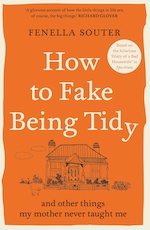I was idly looking through some Airbnb properties the other day when I noticed the existence of a small but unabashed subgroup: People who don’t feel they need to make the bed for their promo photos. The bed is just there in a brazenly tousled state, the doona bunched up, the sheets wrinkled (and generally coloured), the pillows still holding the shape of somebody’s head. Hello!
An unmade bed in the privacy of one’s own home is one thing—normal—but it’s hardly a selling point to strangers, is it? I can only think there are owners who believe a rumpled bed will make their property seem homier, more plausible, somehow. Thanks to this unvarnished pictorial presentation, guests will now be able to imagine sleeping there, in full confidence the sheets work. If I wanted homier, I’d stay home in my own rumpled bed. It’s one of the reasons we love good hotels; all that skintight, crisp linen you practically need a crowbar to get under. There’s something so comforting about a freshly made bed, especially one freshly made by somebody else.
As a small child home sick from school—and I was an expert malingerer—I used to long for that moment when my mother would bustle into the room with clean sheets. She’d remake the bed, plump up the pillows, button me into fresh pyjamas and tuck me back in. Nothing felt safer than that cool, lavender-scented cocoon. Even so, my mother was pretty slapdash about the actual making of the bed, unlike my friend Sue, who has a knack for turning a bed into an immaculate, squared-off haven of calm. All the sheets finish where they should, the selvedges aren’t crooked or flapping, there are no unsightly and possibly disturbing bulges. (My sister-in-law once had the scarring experience of minding someone’s house and feeling a tangled bundle at the end of the bed on the first night. She fished out two greying pairs of the host’s dirty underpants.)
Sue cannot sleep in an unmade bed; even her own, I mean. She can’t simply close the bedroom door on it, either. She has to make her bed, properly, first thing every morning. And there are “happiness experts”—the kind who equate happiness with order—who claim that making your bed each day neatly and tightly (important detail, apparently) increases your sense of wellbeing. I can see that it might, because it does look pleasing. Biological science, however, favours the slackers.
The theory is that it’s best not to make the bed as soon as you get up. Better to roll back the bedding and let it air well, so it can dry out and kill off moisture-loving dust mites ready to thrive darkly and moistly in their millions. I seem to remember airing was also recommended by the Girl Guides manual, back when I attempted the GG daily bedmaking/keeping a neat bedroom challenge, almost as taxing as doing “three good turns” for someone each week. My technique, then as now, was poor, so a while back I asked Sue if I could watch her make a bed. Sad, I know.
As well as doing her own bed, she also ran a bijou guest-house at the time, with nine bedrooms and a steady turnover of guests, so plenty of sheet action to observe. It was an eye-opener. The precision! The way she used the top sheet’s vertical middle crease, left from laundry folding, as a guide to centre the sheet before tucking it in, with hospital corners, of course. No free-form tossing of the sheet over the bed and then shoving the ends under the mattress in a bunchy way. After that, she pulled that top sheet high up to the pillow end, folded the flap in half once and then again, to leave a crisp, turned edge that could be pulled tight. So chic, so hotel . . . Her knack with the pillows was to fold them in half to make it easier to stuff them into their cases, then plump them and neatly stack them on top of each other.
By the way, Sue’s linen was professionally laundered but I’m told the cheat’s way to achieve that smooth, final finish, if you can be bothered, is to take an iron to the made-up bed and press just the folded bit of the sheet that is showing.
Her final trick was the “California roll”, aka “burrito”, method for putting on a quilt cover. It was new to me but clearly it’s a thing in aspirational housekeeping circles—witness over 1.96 million views for one of several online videos on the subject. And it is kind of cool, even if old-school duvet wranglers find it faddish and prefer the traditional method of matching top corners of quilt to tops corners of cover. (That method is satisfyingly simple when it goes well but, when it goes wrong, can lead to a lot of undignified, blind staggering around the bedroom with your head lost in a quilt cover.) Sue tried to teach me the roll way, which involves laying the quilt and the cover, inside out, on top of each other, rolling up both and then kind of inverting the bundle and magically unrolling it, right side out. Voila! Amazing, even if I had to go home and watch it online a couple more times to recall how it worked, and then lie down for a bit.
Tip: It’s much easier to iron a quilt cover by spreading it out over the bed and ironing it there, instead of trying to wrestle it on an ironing board. An extension cord on the iron helps. This also works for sheets, if you’re so inclined.

Extract from How to Fake Being Tidy by Fenella Souter A&U, $32.99.
How helpful was this article?
Click on a star to rate it!
0 / 5. 0
Be the first to rate this post!
Fenella Souter
Related posts
Subscribe
Receive personalised articles from experts and wellness inspiration weekly!

